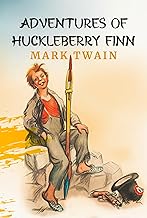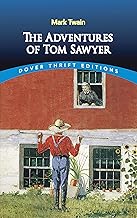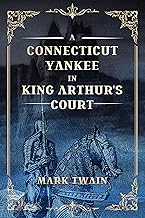
How to Read Mark Twain's Books on American classics
How to Read Mark Twain's Books on American Classics
Estimated Reading Time: 10-12 minutes
Introduction
Mark Twain, born Samuel Langhorne Clemens in 1835, is often hailed as the father of American literature. His works, rich with humor, social criticism, and deep philosophical insights, offer a unique lens through which to view the American experience. Twain's voice is particularly significant in the context of American classics, as he captures the complexities of human nature and the societal issues of his time with unparalleled wit and candor.
Twain's perspective is invaluable not only for its literary merit but also for its ability to provoke thought about morality, race, and the American identity. His works reflect the historical and cultural milieu of 19th-century America, making them essential reading for anyone seeking to understand the evolution of American thought and literature.
Why Mark Twain's Perspective Matters
Mark Twain's approach to American classics is distinctive for several reasons. First, his ability to blend humor with serious social commentary allows readers to engage with complex themes without feeling overwhelmed. Twain's characters often embody the struggles of the common man, making his insights relatable and timeless.
Unlike many of his contemporaries, Twain was unafraid to tackle controversial subjects, such as slavery and social injustice, head-on. His candidness about these issues set him apart from other writers of his time, who often shied away from such topics. The lasting impact of Twain's work is evident in the way it continues to resonate with readers today, challenging us to reflect on our own beliefs and societal norms.
Overview of Recommended Books
The Adventures of Huckleberry Finn
Main Themes and Arguments: "The Adventures of Huckleberry Finn" is often regarded as one of the greatest American novels. At its core, it explores themes of freedom, morality, and the conflict between societal expectations and personal conscience. The story follows Huck Finn, a young boy who escapes his abusive father and embarks on a journey down the Mississippi River with Jim, a runaway slave.
Historical Context and Significance: Published in 1884, the novel is set against the backdrop of pre-Civil War America, a time when slavery was still a contentious issue. Twain's portrayal of Jim as a complex, sympathetic character challenges the racial stereotypes of his time and invites readers to question the morality of slavery.
Key Insights and Takeaways:
- Moral Growth: Huck's moral dilemmas force him to confront the values instilled in him by society, ultimately leading him to prioritize his friendship with Jim over societal norms.
- The Concept of Freedom: The river symbolizes freedom and escape, representing both physical liberation and the quest for self-discovery.
- Critique of Society: Twain's satire of Southern antebellum society exposes the hypocrisy and moral failings of a culture built on slavery and racism.
Why Read This Book: "The Adventures of Huckleberry Finn" is essential for understanding American classics because it encapsulates the struggle between individual morality and societal expectations. Readers interested in themes of freedom, friendship, and social justice will find this novel particularly resonant.
The Adventures of Tom Sawyer
Main Themes and Arguments: "The Adventures of Tom Sawyer" is a coming-of-age story that celebrates childhood and the spirit of adventure. Tom, a mischievous boy living in a small town along the Mississippi River, navigates the trials of youth, from first love to the complexities of friendship.
Historical Context and Significance: Published in 1876, this novel reflects the values and challenges of American life in the mid-19th century. Twain captures the essence of boyhood in a rapidly changing society, where the innocence of childhood clashes with the expectations of adulthood.
Key Insights and Takeaways:
- Imagination and Adventure: Tom's adventures highlight the importance of imagination and play in childhood, reminding readers of the joy found in exploration.
- Social Critique: The novel critiques the rigid social structures of the time, particularly through the lens of education and authority.
- Friendship and Loyalty: The bond between Tom and Huck emphasizes the value of friendship and loyalty, transcending societal boundaries.
Why Read This Book: "The Adventures of Tom Sawyer" is a delightful exploration of youth and adventure, making it a must-read for anyone interested in the joys and challenges of growing up. Its themes of imagination and friendship resonate with readers of all ages, providing insight into the universal experience of childhood.
A Connecticut Yankee in King Arthur's Court
Main Themes and Arguments: In "A Connecticut Yankee in King Arthur's Court," Twain employs satire to explore themes of progress, technology, and the clash between modernity and medieval ideals. The story follows Hank Morgan, a 19th-century American who finds himself transported to Arthurian England, where he attempts to modernize the feudal society.
Historical Context and Significance: Published in 1889, this novel reflects Twain's skepticism about the romanticization of the past and the notion of progress. It serves as a critique of both the medieval period and the socio-political climate of Twain's own time.
Key Insights and Takeaways:
- Critique of Romanticism: Twain challenges the idealized notions of chivalry and heroism, exposing the absurdities of medieval life.
- The Role of Technology: The novel examines the impact of technology on society, questioning whether progress always leads to improvement.
- Cultural Commentary: Hank's attempts to impose modern values on the past highlight the complexities of cultural exchange and the dangers of ethnocentrism.
Why Read This Book: "A Connecticut Yankee in King Arthur's Court" is a thought-provoking satire that encourages readers to reflect on the nature of progress and the value of historical context. Those interested in the interplay between technology and society will find this novel particularly insightful.
How These Books Complement Each Other
While each of Twain's works addresses different aspects of the American experience, they collectively offer a comprehensive understanding of the themes that define American classics. "The Adventures of Huckleberry Finn" and "The Adventures of Tom Sawyer" explore the innocence of youth and the moral dilemmas of adulthood, while "A Connecticut Yankee in King Arthur's Court" critiques the romanticization of history and progress. Together, they provide a rich tapestry of insights into human nature, societal norms, and the American identity.
Who Would Benefit from Reading These Books
These works are ideal for a diverse audience:
- Students and Academics: Those studying American literature will find Twain's insights invaluable for understanding the cultural and historical context of the time.
- General Readers: Anyone interested in classic literature will appreciate Twain's humor and social commentary.
- Professionals Seeking Practical Wisdom: Twain's exploration of morality and ethics offers timeless lessons applicable to modern life.
- Personal Growth Seekers: Readers looking for reflections on friendship, freedom, and societal norms will find rich material for introspection.
Recommended Reading Order
- Start with: The Adventures of Tom Sawyer - This lighthearted introduction to Twain's world sets the stage for deeper themes explored in his later works.
- Continue with: The Adventures of Huckleberry Finn - Building on the foundation of Tom Sawyer, this novel delves into more complex moral and social issues.
- Advanced reading: A Connecticut Yankee in King Arthur's Court - This satirical examination of history and progress challenges readers to think critically about the past and its implications for the present.
Tips for Getting the Most Out of Each Book:
- Take notes on key themes and character developments as you read.
- Discuss the books with others to gain different perspectives.
- Reflect on how the themes resonate with contemporary issues.
Conclusion
Mark Twain's contributions to American classics are both profound and enduring. His ability to blend humor with serious social critique invites readers to engage with complex themes in an accessible manner. By exploring "The Adventures of Huckleberry Finn," "The Adventures of Tom Sawyer," and "A Connecticut Yankee in King Arthur's Court," readers can gain a deeper understanding of the American experience and the timeless questions that shape our society.
I encourage you to dive into these works and discover the richness of Twain's insights. As you read, consider how his observations on morality, friendship, and societal norms continue to resonate today. Happy reading!
Tags: #MarkTwain #AmericanClassics #Philosophy #ReadingGuide #ClassicLiterature #Wisdom
Featured Books

The Adventures of Huckleberry Finn
by Mark Twain
Published: 1884
This illustrated edition of "The Adventures of Huckleberry Finn" includes:The original 1885 first edition text, unabridged and uncensoredFifteen unique silhouette-style book illustrationsSet along the mighty Mississippi River, The Adventures of Huckleberry Finn is Mark Twain’s timeless tale of freedom, friendship, and the search for identity. Huck Finn, a spirited boy escaping the confines of his small-town life, joins forces with Jim, an enslaved man fleeing for his freedom. Together, they embark on a daring journey aboard a raft, navigating treacherous waters and encountering a vivid cast of characters, from crafty conmen to feuding families.Through Huck’s eyes, Twain explores themes of race, morality, and the bonds that transcend societal divisions. Huck wrestles with his conscience and challenges the prejudices of his world, making this story as relevant today as it was in its time. A thrilling adventure and a profound exploration of human nature, The Adventures of Huckleberry Finn is a cornerstone of American literature that will captivate readers of all ages. Read more

The Adventures of Tom Sawyer
by Mark Twain
Published: 1876
Whether forming a pirate gang to search for buried treasure or spending a quiet time at home, sharing his medicine with Aunt Polly's cat, the irrepressible Tom Sawyer evokes the world of boyhood in nineteenth century rural America. In this classic story, Mark Twain re-created a long-ago world of freshly whitewashed fences and Sunday school picnics into which sordid characters and violent incidents sometimes intruded. The tale powerfully appeals to both adult and young imaginations. Readers explore this memorable setting with a slyly humorous born storyteller as their guide. Tom and Huck Finn conceal themselves in the town cemetery, where they witness a grave robbery and a murder. Later, the boys, feeling unappreciated, hide out on a forested island while the townspeople conduct a frantic search and finally mourn them as dead. The friends triumphantly return to town to attend their own funeral, in time for a dramatic trial for the graveyard murder. A three-day ordeal ensues when Tom and his sweetheart, Becky Thatcher, lose their way in the very cave that conceals the murderer. With its hilarious accounts of boyish pranks and its shrewd assessments of human nature, The Adventures of Tom Sawyer has captivated generations of readers of all ages. This inexpensive edition of the classic novel offers a not-to-be-missed opportunity to savor a witty and action-packed account of small-town boyhood in a bygone era. Read more

A Connecticut Yankee in King Arthur's Court
by Mark Twain
Published: 1889
About A Connecticut Yankee in King Arthur’s Court by Mark TwainEmbark on a whirlwind adventure with "A Connecticut Yankee in King Arthur's Court" by Mark Twain, where the clash of centuries becomes a tapestry of wit, innovation, and unexpected challenges. Meet Hank Morgan, a pragmatic soul from Connecticut thrust into the heart of medieval splendor after a curious blow to the head.Armed with 19th-century know-how and an audacious spirit, Hank transforms into the "Connecticut Yankee" amidst the grandeur of knights, enchantment, and honor. Watch as he dares to defy destiny, introducing technological wonders to a realm accustomed to chivalric tradition.However, the path to progress is fraught with resistance, and Hank must navigate a bygone era's complexities, entangled in the intricate web of King Arthur's court. As the tale unfolds, the narrative becomes a symphony of humor, exploring the timeless dance between power, progress, and the tension between age-old traditions and newfound innovations.Twain's brilliant humor paints a vivid commentary on the juxtaposition of past and present, leaving readers chuckling while pondering the profound questions that echo through time. Can Hank's audacious attempts to reshape history withstand the weight of medieval resistance?Get ready for a journey through laughter, challenges, and unexpected revelations as "A Connecticut Yankee in King Arthur's Court" unfolds a timeless narrative that delves into the very essence of progress and the consequences of challenging the echoes of the past. Step into a world where humor meets history, and innovation clashes with tradition. The adventure awaits!Sneak Peak“Words are only painted fire, a look is the fire itself. She gave that look, and carried it away to the treasury of heaven, where all things that are divine belong.”Why Aevum Editions stunning reprint is Unique“Aevum” means “Everlasting” and at Aevum Editions Publishing we take every step possible to ensure the preservation and Original integrity of this book has been upheld to its highest standard. This means that the texts in this story are unedited and unchanged from the original authors publication, preserving its earliest form for you to enjoy. Add A Connecticut Yankee in King Arthur’s Court by Mark Twain, to your reading list today and see why it has remained a book club favorite!Included in the bookThe Complete Original 1889 textUniquely Designed Cover for Paperback, Hardcover, and E-booksHistorical AnnotationGenre: Satirical Fiction, Time-Travel Fantasy, Historical Comedy, Social Commentary, Adventure FictionBook Dimensions: 5.5 x 8.5Paperback Matte CoverCream Paper Read more